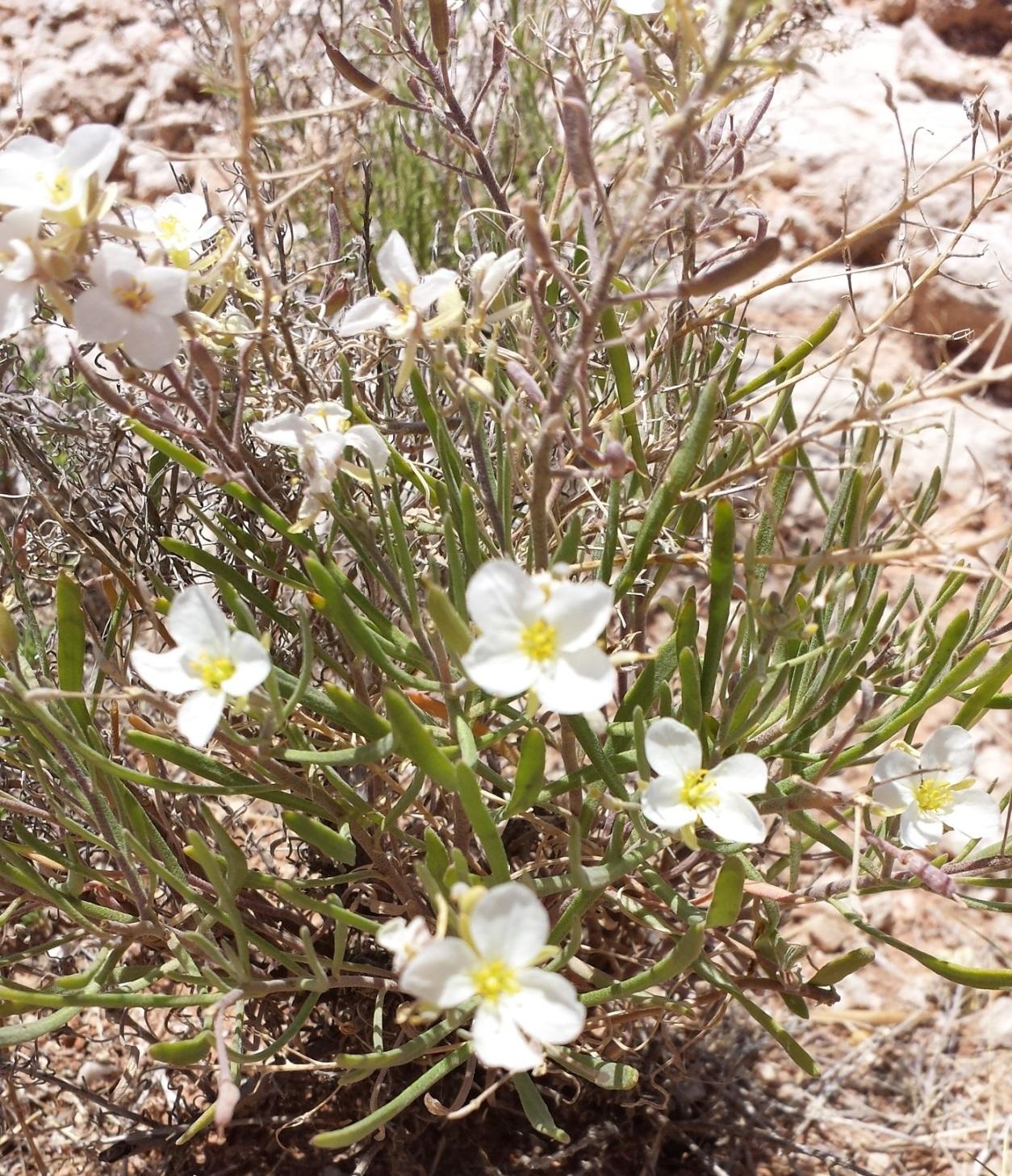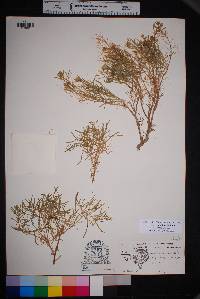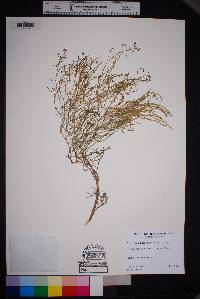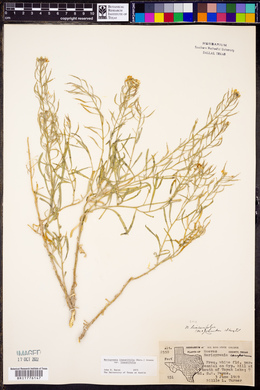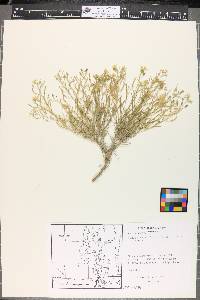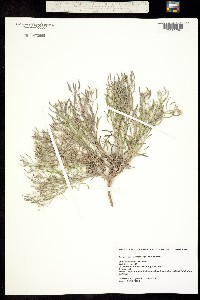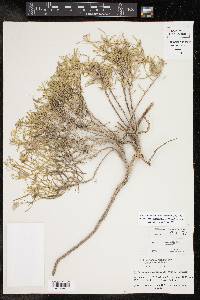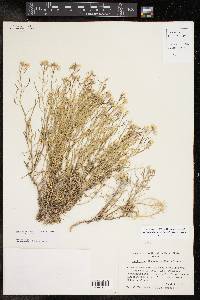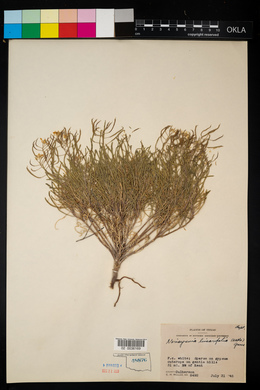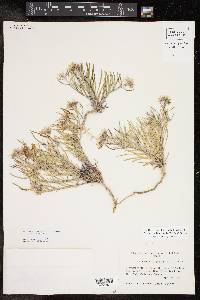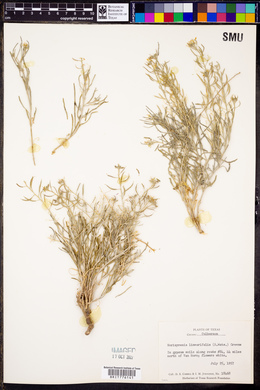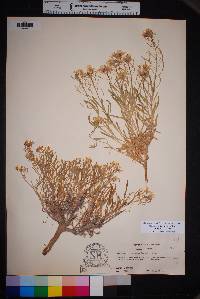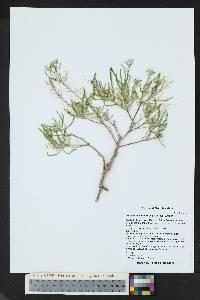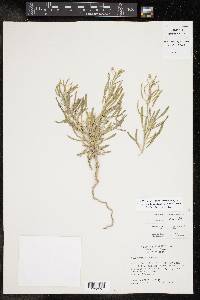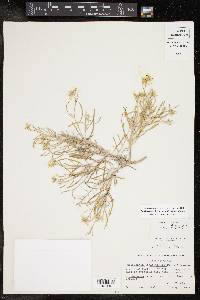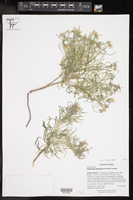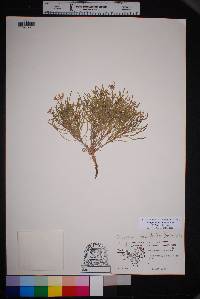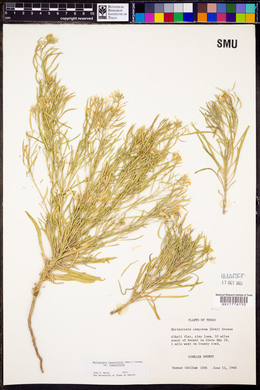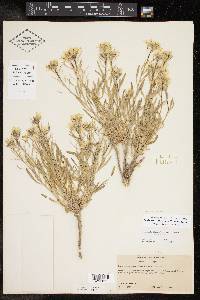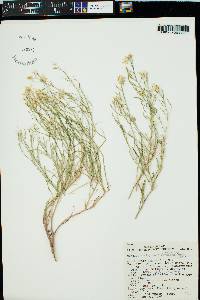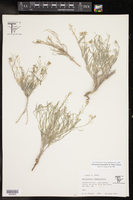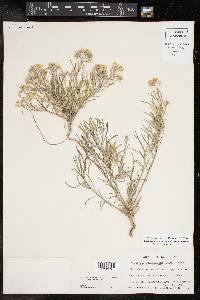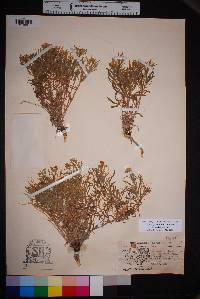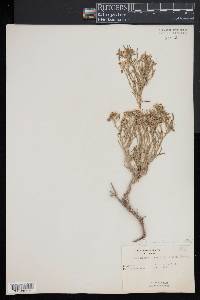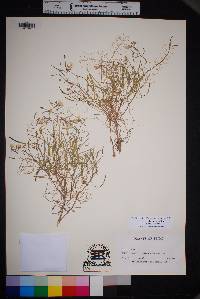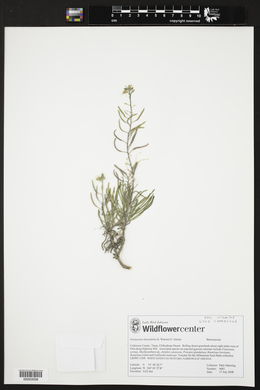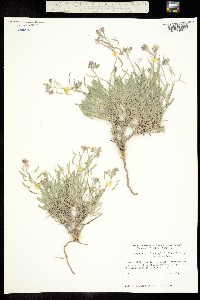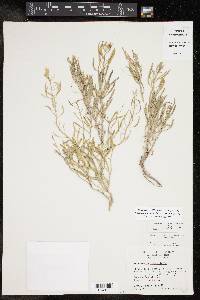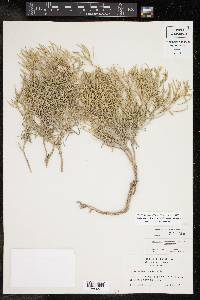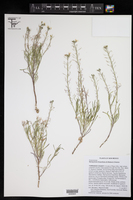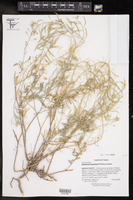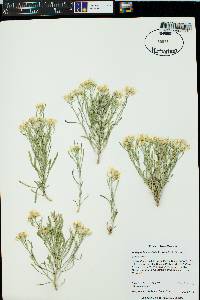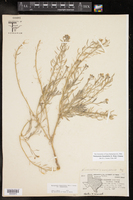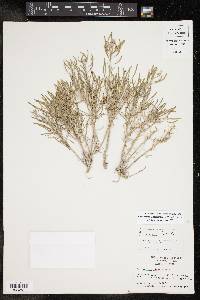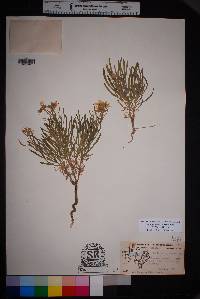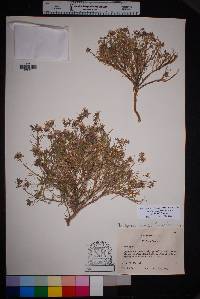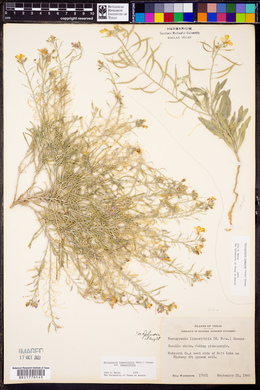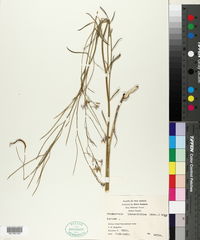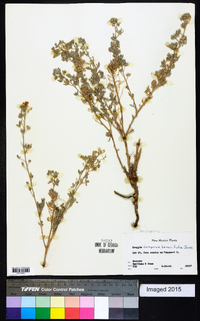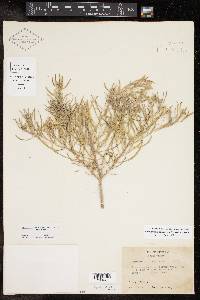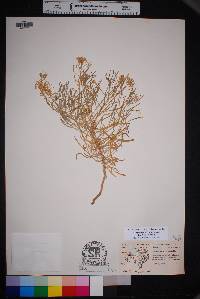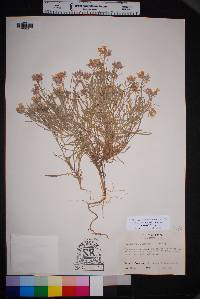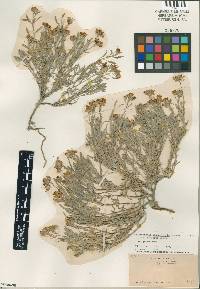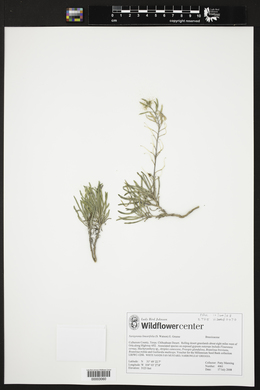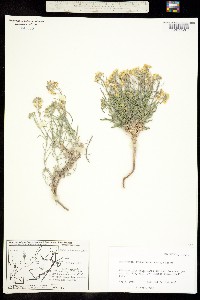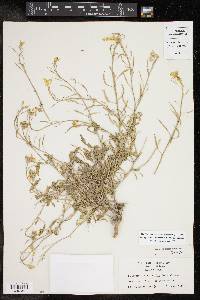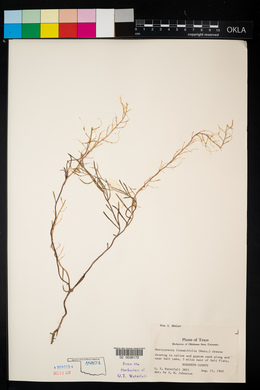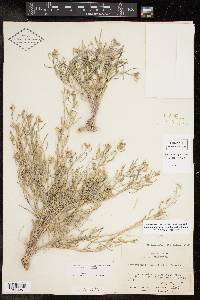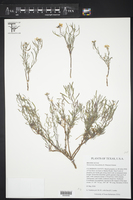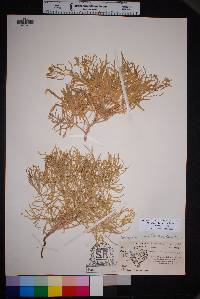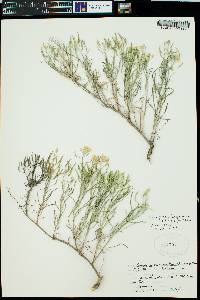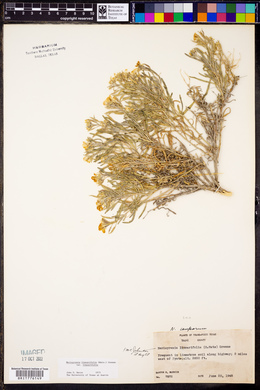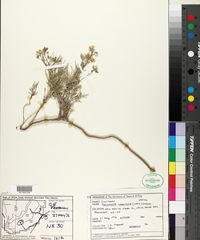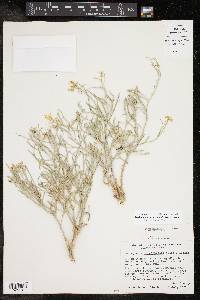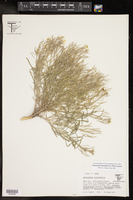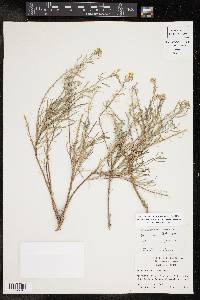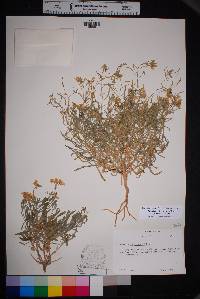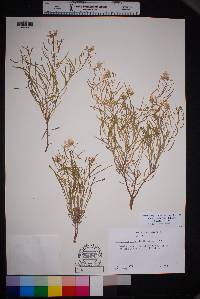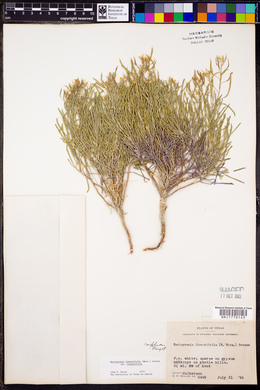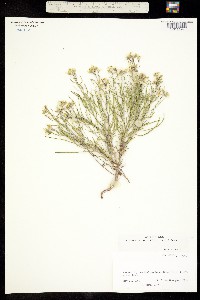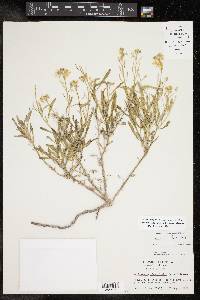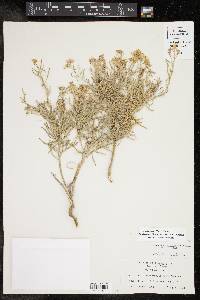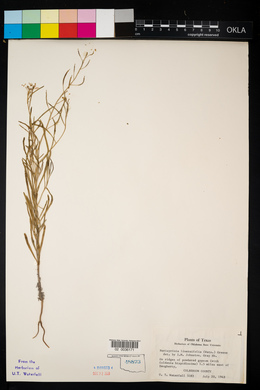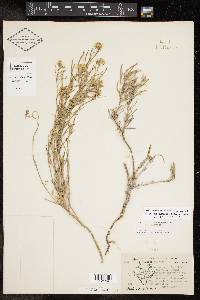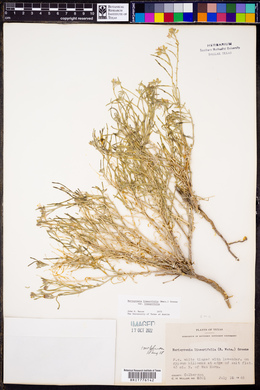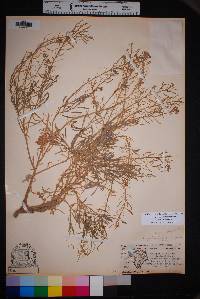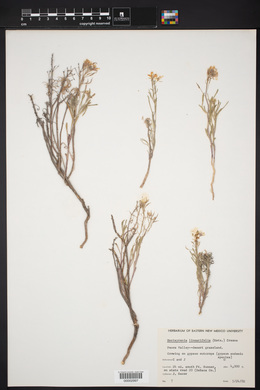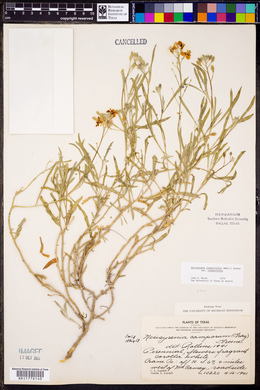
|
|
|
|
Family: Brassicaceae
White Sands Fan-Mustard
[Greggia camporum var. angustifolia, moreGreggia camporum var. linearifolia (S.Watson) M.E.Jones, Nerisyrenia linearifolia var. linearifolia] |
Plants with woody caudex; moderately to densely pubescent. Stems (0.5-)1-4 dm, woody proximally, densely to moderately pubescent. Cauline leaves sessile or nearly so; blade linear to linear-oblanceolate, 1.5-7 cm × 1-4.5 mm, (fleshy), base attenuate, margins usually entire, rarely dentate, apex acute to obtuse. Racemes to 3.5 dm in fruit. Fruiting pedicels 0.6-1.4 cm, densely pubescent. Flowers: sepals broadly lanceolate to ovate, 4.8-7.5 × 1-2 mm; petals obovate to spatulate, 8-12(-13) × 5-8.5 mm, (often flattened), claw to 2 mm, (margin dentate); filaments 4-6 mm; anthers 2.5-3.5 mm. Fruits terete to slightly angustiseptate, 0.9-3 cm × 1-2.2 mm; ovules 30-80 per ovary; style 0.9-4 mm. Seeds 0.5-0.7 × 0.4-0.5 mm. 2n = 18, 19, 20, 34, 36. Flowering Apr-Dec. Gypsum soils in knolls, bluffs, open flats; 1000-1200 m; N.Mex., Tex.; Mexico (Coahuila, Nuevo León, San Luis Potosí, Tamaulipas). Both J. D. Bacon (1978) and R. C. Rollins (1993) recognized two weakly defined varieties of Nerisyrenia linearifolia distinguished primarily on the position of the widest portion of the fruit. Of those, var. mexicana Bacon (Coahuila, Mexico) has fruits widest near the base instead of the middle.
FNA 2010, Correll and Johnston 1970, Allred and Ivey 2012 Duration: Perennial Nativity: Native Lifeform: Forb/Herb General: Perennial herb to subshrub, 5-40 cm tall, from a woody caudex; stems woody near the base, erect to ascending, branched above the base, densely to moderately pubescent with branching (dendritic) hairs. Leaves: Alternate along the stems, sessile or very nearly so; blades often fleshy, linear to linear-oblanceolate, 1.5- 7 cm long and 1-4 mm wide, with a tapering base and usually entire (occasionally dentate) margins. Flowers: Showy and white to lavender, in terminal racemes up to 35 cm long, which are congested in flower and elongate in fruit; pedicels densely pubescent, 6-14 mm long, ascending in flower and ascending to spreading when in fruit, or rarely recurved; sepals 4, spreading, 5-8 mm long; petals obovate, 8-13 mm long, white and fading lavender. Fruits: Capsules linear to oblong, 1-3 cm long and 1-2 mm wide, terete (rounded in cross section) to slightly compressed, pubescent, topped with a persistent style 1-2 mm long; seeds numerous, less than 1 mm long. Ecology: Found in gypsum soils on knolls, bluffs, and open flats, from 2,000-7,500 ft (610-2286 m); flowers April- December. Distribution: c, se NM, w TX, ne MEX Notes: Recognize this relatively small perennial mustard by its attractive 4-petaled white flowers which fade to lavender; long, narrow leaves; and oblong, slightly compressed seed pods. It is quite similar to its congener, L. camporum, but that species has wider, often toothed leaves (0.5 to 2 cm wide, compared to 1-3 mm in this species) and is covered by a layer of matted hairs that give the stems and leaves a whitish cast. N linearifolia, on the other hand, can be densely moderately pubescent, but the hairs do not tint the plant whitish or grayish. Look for it in gypsum soils. Ethnobotany: Unknown Etymology: Nerisyrenia comes from the Greek neros, flowing, and Syrenia, a genus of mustards from eastern Europe and central Asia, presumably alluding to a resemblance; linearifolia means linear, or line-shaped leaves. Editor: AHazelton 2107 |
This project was made possible in part by the Institute of Museum and Library Services [MG-70-19-0057-19].
Powered by Symbiota

